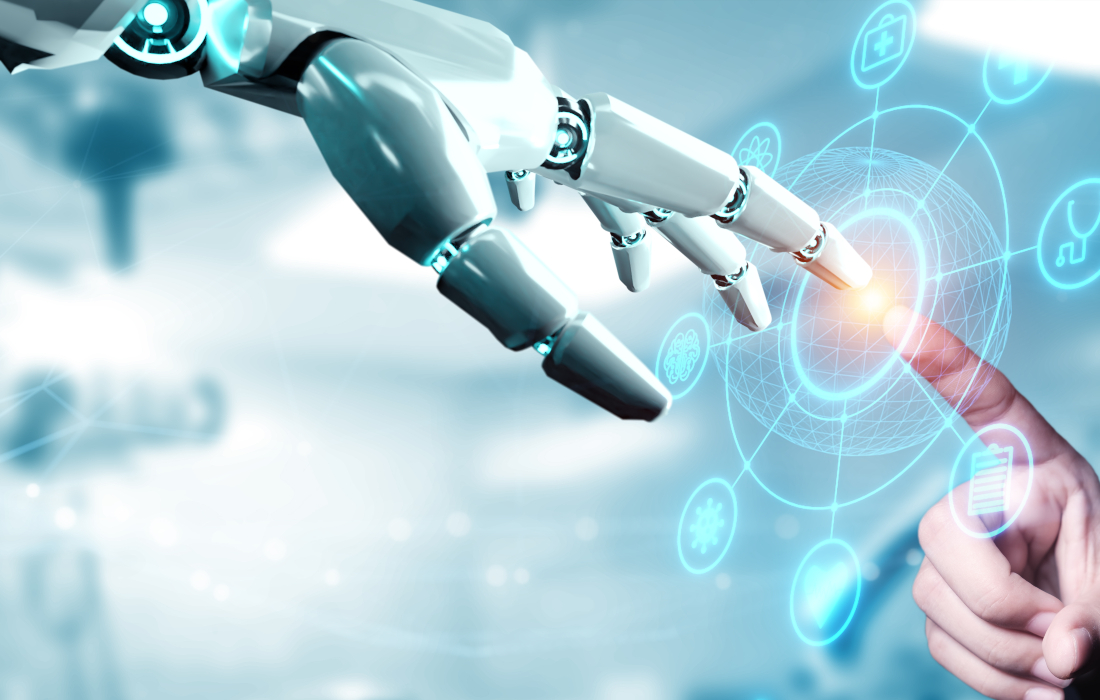Robotics is rapidly changing many areas, making it easier for humans and machines to work together. Recent developments in robotics are not only making robots smarter and more flexible, but also making them more useful in more and more situations. From automating factories to helping people complete personal tasks, these technological advances are driving dramatic changes in the way robots are used at work and in everyday life.
1. Robots Controlled by Artificial Intelligence:
The use of artificial intelligence (AI) is one of the most important changes in robotics. AI-powered robots use complex formulas and machine learning to improve their ability to do things and make choices. These robots can analyze and interpret data from their environment. They can also learn from their mistakes and adapt to new situations. This skill allows them to perform complex tasks with greater accuracy and freedom. Robots controlled by artificial intelligence are especially useful in environments that change rapidly and require constant adaptation and learning.
2. Collaborative Robots:
Collaborative robots represent collaborative robots and represent a major advancement in industrial robotics technology. Unlike traditional robots that work alone, collaborative robots can work safely alongside people in shared offices. Collaborative robots can talk to people without any real barriers because they have built-in sensors and safety features. This partnership allows collaborative robots to perform boring or dangerous tasks while humans focus on more creative and complex tasks, making industrial processes more efficient and flexible.
3. Soft Robot:
The field of soft robotics is another area that is becoming increasingly popular. Soft robots are made of soft and deformable materials. This makes them as flexible and agile as living creatures. This new technology allows robots to perform delicate tasks and move objects in ways that rigid robots cannot. Soft robotics has applications in many areas, such as biomedical equipment that requires careful and gentle handling, and in agricultural fields, where flexible robots can handle plants and soil without getting in the way.
4. Robot Exoskeleton:
Wearable robotic exoskeletons are designed to enhance the physical skills of those who use them. These new ideas provide support and strength, making them useful tools in the workplace and recovery environments. Robotic exoskeletons are used in healthcare to help people become stronger and more mobile after injury or surgery. Exoskeletons can help reduce the risk of musculoskeletal injuries in the workplace by supporting workers while they perform demanding physical tasks. The latest exoskeleton designs are lighter, more comfortable and more efficient, making them easier to use and more useful.
5. Swarms of Robots:
Swarm robots are a new way of doing things, inspired by the way social insects like bees and ants behave as a swarm. This technology uses multiple robots. They work together as an organized team, talking to each other and sharing information to get the job done faster. Swarm robotics can be used for a variety of purposes, such as environmental monitoring (where many robots work together to collect data over a large area) and search and rescue efforts (where a swarm of robots can better cover a larger area and find survivors). The collaboration capabilities and flexibility of swarm robots enable them to better handle difficult and large-scale jobs.
6. Consumer-Facing Robots:
The consumer robotics market has also undergone dramatic changes, leading to more advanced and cheaper personal robots. These robots can be used in everyday life for entertainment, personal assistance and household chores. Better robot vacuum cleaners, smart home assistants and interactive robots that provide support and friendship are all examples of new technologies in this field. The latest consumer robots have better artificial intelligence, allowing them to do things independently and communicate with people in a more natural way.
Conclusion:
Recent developments in robotics are making astonishing progress in many areas, from automating factories to helping people work from home. Collaborative robots, soft robots, robotic exoskeletons, swarm robots and market robots are some of the new types of robots that are changing the way they are used and how they are integrated into different parts of life. Because technology is constantly changing, these new ideas should make robots more useful and efficient. They can also improve everyone’s lives by making things safer and more comfortable.
FAQs:
1. What is an artificial intelligence controlled robot?
Robots that use artificial intelligence to make themselves more useful are called AI-powered robots. These robots use advanced methods and machine learning to learn about their environment, make choices, and improve over time. This allows them to perform difficult tasks and adapt to new situations better than regular robots.
2. How do collaborative robots (cobots) differ from other robots?
Collaborative robots, or ‘cobots’, are designed to work safely with people in shared workspaces. Collaborative robots differ from regular robots because they are equipped with sensors and safety features that allow them to communicate safely with people. This collaborative approach improves productivity and adaptability in factories and elsewhere by letting collaborative robots perform boring or dangerous tasks while humans take on more difficult tasks.
3. What is “soft robot”?
Soft robotics is the study of building robots from soft, deformable materials that can move and change shape like living things. Traditional rigid robots cannot handle delicate work and move objects like soft robots. Soft robotics are used in biomedical equipment that requires gentle operation, and in agriculture, where flexible robots can interact with crops and soil without getting in the way.
4. What does a robotic exoskeleton do?
Robotic exoskeletons are gadgets that people can wear to make their bodies stronger. They are used in rehabilitation to help people who have been injured or have undergone surgery regain strength and mobility. Exoskeletons can help reduce the risk of musculoskeletal injuries in the workplace by supporting workers while they perform demanding physical tasks. The latest exoskeletons are designed to be comfortable and lightweight, making them more useful and effective.
5. What is a swarm robot? How does it work?
In swarm robotics, many robots work together as an organized group. It is based on the behavior of social insects, such as bees and ants, as a group. These robots talk to each other and work together to get the job done faster than a single robot. Swarm robotics is used in situations where teamwork and adaptability are important, such as search and rescue, caring for the environment, and managing farms.



